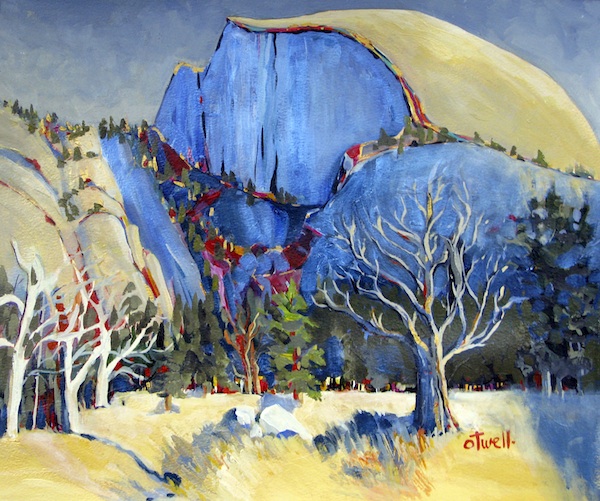
Penny Otwell’s painting of Half Dome in winter, titled “She Wears A Red Necklace,” was a 25” by 32” acrylic work done on paper.
When Penny Otwell hikes past familiar sights in Yosemite National Park, she usually travels with a sketchbook in hand. She’s worked a variety of jobs at the park over the past half-century, just for the opportunity to dwell in this beloved place. As a self-taught painter, “the park was my art school,” she says. “I drew every weekend when I’d go out hiking. Now, I can go to those sketchbooks [there are 40 in all], pull out a sketch and say, ‘I think I’ll paint that scene today.’ ”
Her expressionistic landscapes, done in both oil and watercolor, are bursting with vibrant hues that capture the transient light of Ahwahnee Meadow or the dusty greens and blues of a late summer’s afternoon at Sentinel Fall. Otwell’s loose technique also makes her a popular instructor at the park, where her watercolor classes fill quickly.
The painter’s most recent show, currently on display at the Ansel Adams Gallery in Yosemite Valley, resides alongside the famous black-and-white landscape photographs taken by Adams. While their work is divergent, Otwell’s creativity, like that of Adams, is fed by the transformative vistas she seeks to capture with each outing. At 70, her creativity, she says, is on fire.
“I’m looking to express my love for this place,” she explains. “People ask me if I get tired of painting Yosemite, and I tell them, ‘No.’ The light is different at different times of the year, so it’s very inspiring. Yosemite knocks my socks off.”
Otwell is just one of millions of artists who have long been inspired by the majestic beauty of the national parks. They follow in the footsteps of early artists and photographers who brought home images of these magical places in the West and revealed their importance to us as a nation. In many parks — Yellowstone, Denali, Yosemite — artists have played a crucial role in making a case for the preservation of these public lands.
Historic Perspective
It was geologist Ferdinand Hayden who, in addition to tapping scientists, botanists, and zoologists, called upon artist Thomas Moran and photographer William Henry Jackson to take part in the 1871 geological survey of the Yellowstone region. The resulting work — Moran’s vibrant paintings and Jackson’s keen photography — provided evidence of this “wonderland” that might be lost if not preserved. Hayden’s lectures, accompanied by Jackson’s slides, spread the word of Yellowstone’s natural and diverse riches. Pay a visit to Mammoth Hot Springs Visitor Center in Yellowstone today, and you can gaze at some of Moran’s original works.
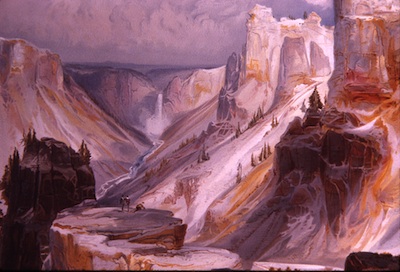
Thomas Moran's artworks of Yellowstone helped convince Congress to establish the world's first national park. NPS print.
Many of those wild places he painted remain unchanged today — nearly 150 years later.
Photography also captured the grandeur of parks, and became a form of commerce for those associated with the parks. Early in Mesa Verde’s history, Richard Wetherill, whose Alamo Ranch bordered the vast cliff dwellings in the late 1800s, went into partnership with a photographer selling pictures of the dwellings for tourists to take home. In Yellowstone, visitors could purchase hand-colored photographs produced by Frank J. Haynes and his son, Jack Ellis Haynes, of Haynes Studios, long-time concessionaires of the park. Those images, now highly collectible, survive as mementos that ensure that the parks’ legacy lives on in the hearts and minds of visitors.
For Japanese-born artist Chiura Obata, the natural world of Yosemite soon found its way into his paintings, and a collection of exquisitely crafted color woodblock prints. In the 1930s and ‘40s, Obata taught outdoor sketching classes to tourists at the park; his work is warmly embraced and collected today. “My paintings, created by the humble brush of a mediocre man, are nothing but expressions of my wholehearted praise and gratitude,” Obata wrote of his inspiration.
Artists in the Parks
The National Park Service has long fostered these creative relationships, bringing artists into the parks to share their expertise with visitors, to help students see the world through fresh eyes, and to provide further inspiration for personal creative endeavors.
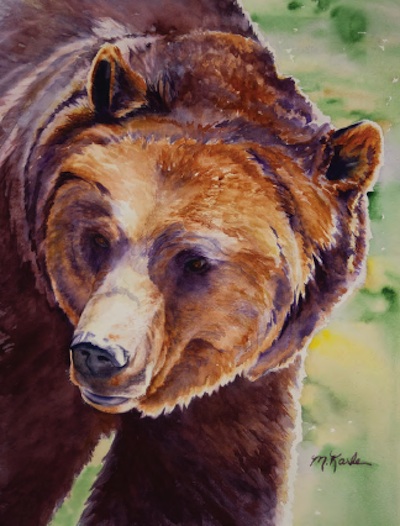
Marsha Karle long worked for the National Park Service in Yellowstone and draws much of her inspiration from the park’s wildlife and landscapes. Her works can be purchased from www.fineartamerica.com.
Artist-in-residence programs thrive in many locales. The two-week programs give artists a chance to explore the park more intimately and share their insights and techniques with visitors.
Today, parks organizations also continue to explore new ways of bringing the arts and parks together. Rims to Ruins, a fine art show, is the culmination of an invitation extended to nationally recognized artists to paint in less visited sections of Mesa Verde. The event, sponsored by the Mesa Verde Foundation, brought artists together last May. Now, the show and sale of their work will raise funds to benefit the park.
Veryl Goodnight, a sculptor and painter based in Mancos, Colorado, was one of 28 artists who took part. Her paintings, of a powerful black stallion, a raven, and a mountain lion at daybreak, focus on the natural world of Mesa Verde.
“The artists were excited for two reasons,” explains Mesa Verde Foundation Executive Director Ben Duke. “They wanted access to the park to paint where they wouldn’t (normally) have access and the opportunity to share their vision of the park with the public. They can spread the good word about Mesa Verde.”
Artist John Burton of Carmel, California, was so inspired by his first visit to the cliff dwellings that a series of 40 paintings resulted, one of which recently was featured in the magazine Art of the West.
Such exhibitions are also a way for the national parks to grow their collections. In July 2013, plein air oil painter Bill Davidson received the Grand Teton National Park Superintendent’s Award for “Teton Heights” and his painting is now part of Grand Teton National Park’s permanent collection.
“Plein air is a vehicle, not a destination,” notes Jean Stern, executive director of the Irvine Museum, and co-author of the new book, Art in the National Parks: Historic Connections, Contemporary Interpretations. This large format book exams the relationship between the national parks and working artists and features the artwork of 70 artists and sculptors interpreting eight national parks.
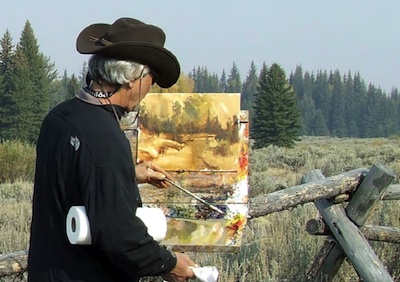
Plein air artists such as Bill Davidson generally work quickly in the field and often later finish their works in the studio. More of his work can be viewed at his website, www.billdavidson.biz / Photo courtesy of the artist.
“The artist must be outdoors because you want to be in the light and in two hours, the light changes, shadows change,” he says.
The approach of using the outdoor sketch is the most important part of plein air work because it helps artists better capture colors under various light. Artists might use a dozen or more sketches for a single work, focusing individual sketches on specific details of the landscape: the hills, mountains, foreground, clouds, and so forth.
“These are the shorthand notes used to put together a final work,” says Stern, of a painting that might take much longer to create in studio than it would out in the field.
Painter Marsha Karle worked as a National Park Service employee for more than 30 years, starting in 1981 in Denali before eventually completing her career as the chief of public affairs at Yellowstone. Her work, she says, arose out of necessity. “My husband liked to look for grizzly bears and would sit on a hill for hours, looking through his spotting scope. But I’m Type-A, so I started taking notebooks to draw in.” That unvarnished beginning gave rise to a passion Karle continues to explore. In addition to her own paintings, she works alongside her husband, writer Paul Schullery, to produce nature books.
“Being an artist helps me see the park more deeply. By trying to interpret it on paper or paint, it makes me feel closer to the natural world,” she says. “When drawing a bison, one of my favorite animals, I learn about the color of their eyes or the shape of their head. I love that detail.”
And while all artists want to realize monetary benefit from their work, it’s also about something more transcendent.
“I hope people will feel connected to these wonderful places,” notes Karle.
Adds Otwell, “It’s not the money, but it’s that someone heard me speaking and got my voice. That’s validating for a 70-year-old woman.”
Traveler postscript: More art from the parks can be viewed in the magazine layout of this article, found here.


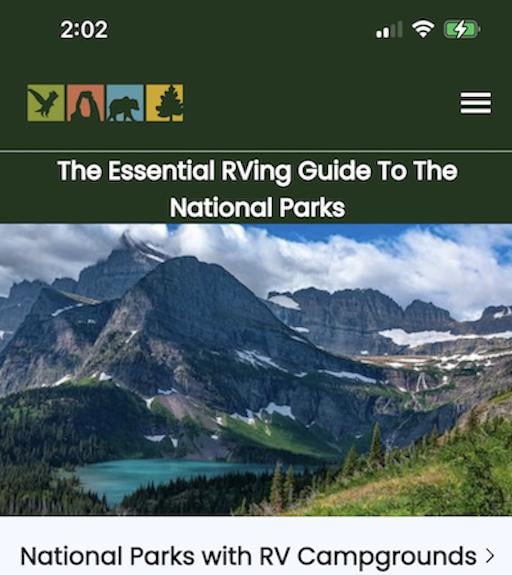
Comments
I kind of understand .... have been photographing Glacier NP for 23 years and am never bored to go back again ... and again. Seasons are different, lighting is different, flowers, wildlife ... Via photographs, I love to share Glacier with everybody. But maybe I should quit since it's becoming "over-loved" .